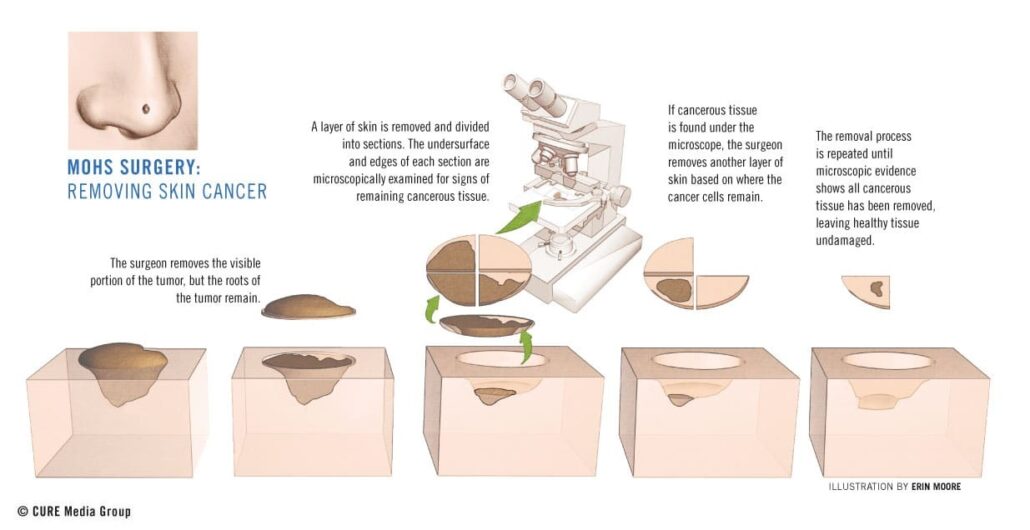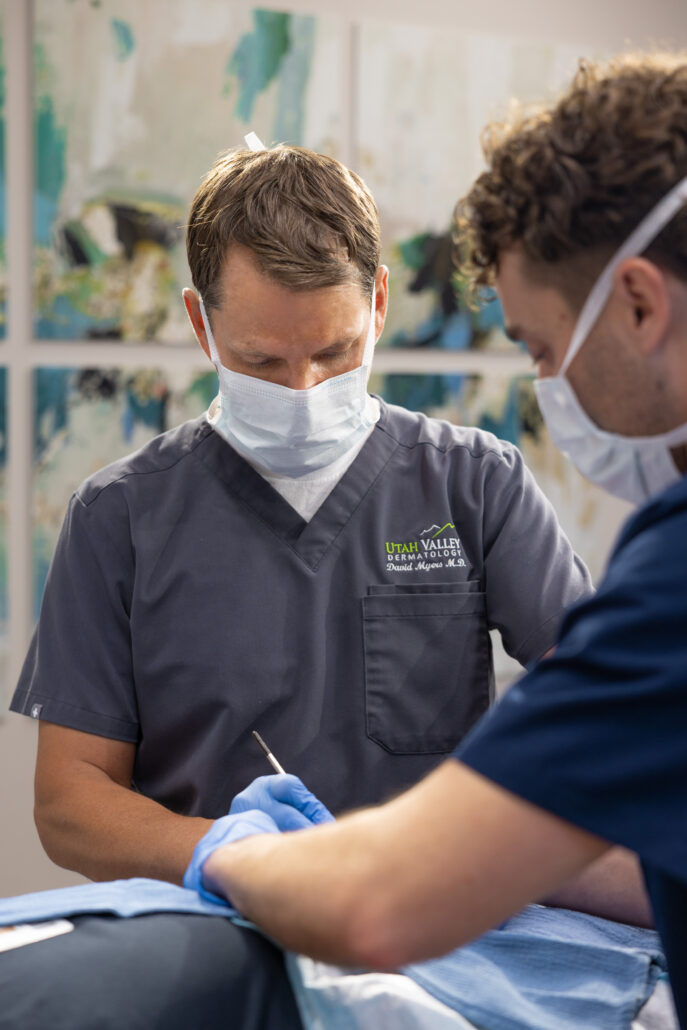MOHS SURGERY


What is Mohs?
A procedure used to treat certain types of skin cancer, and soft tissue sarcoma of the skin. During Mohs surgery, one layer of tissue at the site of a visible cancer is removed at a time and checked under a microscope for the presence of cancer. This process is repeated until all cancerous tissue has been removed. This type of surgery removes as little normal tissue as possible.

What can I expect?
The procedure will take 2-4 hours with your board-certified dermatologist. The entire procedure is performed under local anesthesia, allowing the patient to stay awake without feeling any pain.
What areas does it treat?
- Any cancerous areas
TREATMENT OVERVIEW
TYPE:
- Skin Cancer
BENEFITS:
- Complete surgery and repair of the cancerous area
- Best treatment for both cosmetic and functional outcome
- Single visit outpatient surgery
RESULTS:
- Cure from skin cancers
- Minimal damage to surrounding tissue
SCHEDULE A CONSULTATION
If you’re thinking about next steps, get in touch to schedule a consultation.


